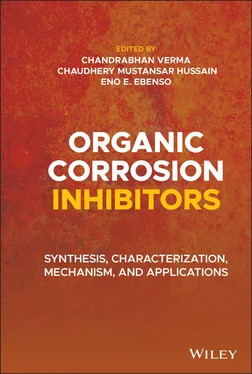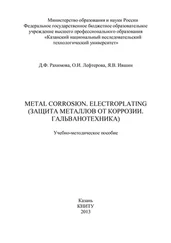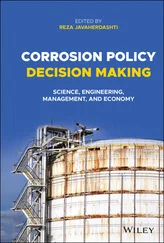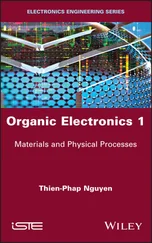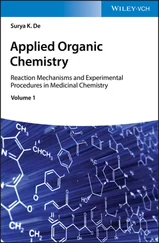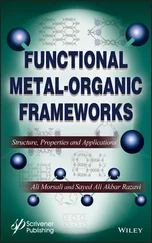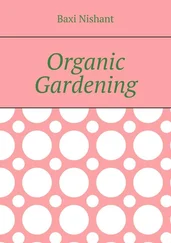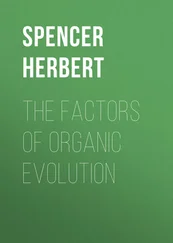7 7 Quraishi, M., Chauhan, D., and Saji, V. (2020). Heterocyclic Organic Corrosion Inhibitors. Elsevier.
8 8 Gladkikh, N., Makarychev, Y., Petrunin, M. et al. (2020). Progress in Organic Coatings 138: 105386.
9 9 Lashgari, S.M., Yari, H., Mahdavian, M. et al. (2021). Corrosion Science 178: 109099.
10 10 Goffin, B., Banthia, N., and Yonemitsu, N. (2020). Construction and Building Materials 263: 120162.
11 11 Bustos‐Terrones, V., Serratos, I.N., Vargas, R. et al. (2021). Materials Science and Engineering B 263: 114844.
12 12 Akbarzadeh, S., Ramezanzadeh, M., Ramezanzadeh, B., and Bahlakeh, G. (2020). Journal of Molecular Liquids 319: 114312.
13 13 Ma, T., Tana, B., Xua, Y. et al. (2020). Colloids and Surfaces A 599: 124872.
14 14 Srivastava, V., Salman, M., Chauhan, D.S. et al. (2021). Journal of Molecular Liquids https://doi.org/10.1016/j.molliq.2020.115010.
15 15 Farahati, R., Behzadi, H., Mousavi‐Khoshdel, S.M., and Ghaffarinejad, A. (2020). Journal of Molecular Structure 1205: 127658.
16 16 Ouakki, M., Galai, M., Rbaa, M. et al. (2020). Journal of Molecular Liquids 319: 114063.
17 17 Lv, Y.‐L., Kong, F.‐Y., Zhou, L. et al. (2021). Journal of Molecular Structure 1228: 129746.
18 18 Suhasaria, A., Murmu, M., Satpati, S. et al. (2020). Journal of Molecular Liquids 313: 113537.
19 19 Proctor, G. and Redpath, J. (1996). MONOCYCLIC AZEPINES: The Syntheses and Chemical Properties of the Monocyclic Azepines. New York: Wiley.
20 20 Arslan, T., Kandemirli, F., Ebenso, E.E. et al. (2009). Corrosion Science 51: 35–47.
21 21 Gece, G. (2011). Corrosion Science 53: 3873–3898.
22 22 Demchenko, A.M., Nazarenko, K.G., Makei, A.P., and Prikhod, S.V. (2004). Russian Journal of Applied Chemistry 77 (5): 790–793.
23 23 Bondar, О.S., Prykhodko, S.V., Kurmakova, І.М., and Humenyuk, О.L. (2011). Materials Science 47 (3): 90–93.
24 24 Vaszilcsina, N., Ordodi, V., Borza, A. et al. (2012). International Journal of Pharmaceutics 431: 241–244.
25 25 Krygowski, T.M., Szatyłowicz, H., and Zachara, J.E. (2005). The Journal of Organic Chemistry 70: 8859–8865.
26 26 Chourasiya, S.S., Kathuria, D., Wani, A.A., and Bharatam, P.V. (2019). Organic & Biomolecular Chemistry 17: 8486–8521.
27 27 El‐Maksoud, S.A.A. and Fouda, A.S. (2005). Materials Chemistry and Physics 93: 84–90.
28 28 Öğretir, C., Mihci, B., and Bereket, G. (1999). Journal of Molecular Structure (THEOCHEM) 488: 223–231.
29 29 Lashkari, M. and Arshadi, M.R. (2004). Chemical Physics 299: 131–137.
30 30 Ansari, K.R., Quraishi, M.A., and Singh, A. (2015). Measurement 76: 136–147.
31 31 Kosari, A., Moayed, M.H., Davoodi, A. et al. (2014). Corrosion Science 78: 138–150.
32 32 Abdelshafi, N.S. (2020). Protection of Metals and Physical Chemistry of Surfaces 56 (5): 1066–1080.
33 33 Berisha, A. (2020). Electrochemistry 1: 188–199.
34 34 Javadian, S., Ahmadpour, Z., and Yousef, A. (2020). Progress in Organic Coatings 147: 105678.
35 35 Kurmakova, I.M., Bondar, O.S., and Demchenko, N.R. (2016). Materials Science 51 (5): 17–23.
36 36 Ebenso, E.E., Kabanda, M.M., Murulana, L.C. et al. (2012). Industrial and Engineering Chemistry Research 51: 12940–12958.
37 37 Kagatikar, S., Sunil, D., Kumari, P., and Shetty, P. (2020). Journal of Bio‐ and Tribo‐Corrosion6: 136.
38 38 Alya, K.I., Mohamed, M.G., Younisc, O. et al. (2020). Progress in Organic Coatings 138: 105385.
39 39 Bouklah, M., Attayibat, A., Kertit, S. et al. (2005). Applied Surface Science 242: 399–406.
40 40 Khamaysa, O.M.A., Selatnia, I., Zeghache, H. et al. (2020). Journal of Molecular Liquids 315: 113805.
41 41 Chetouani, A., Aouniti, A., Hammouti, B. et al. (2003). Corrosion Science 45: 1675–1684.
42 42 Abderrahim, K., Selatnia, I., Sid, A., and Mosset, P. (2018). Chemical Physics Letters 707: 117–128.
43 43 Manoj, M., Kumaravel, A., Mangalam, R. et al. (2020). Journal of Coating Technology and Research 17 (4): 921–935.
44 44 Sundberg, R.J. (1996). Indoles. London: Academic Press Limited.
45 45 Neto, J.S.S. and Zeni, G. (2020). Organic & Biomolecular Chemistry 18: 4906–4915.
46 46 Ituen, E., Mkpenie, V., Moses, E., and Obot, I. (2019). Bioelectrochemistry 129: 42–53.
47 47 Abdellaouia, O., Skallia, M.K., Haoudia, A. et al. (2021). Chem 9 (1): 044–056.
48 48 Keleşoglu, A., Yıldız, R., and Dehri, I. (2019). Journal of Adhesion Science and Technology 33 (18): 2010–2030.
49 49 Feng, L., Zhang, S., Feng, Y. et al. (2020). Chemical Engineering Journal 394: 124909.
50 50 Feng, Y., Feng, L., Suna, Y. et al. (2020). Crystal Research and Technology 9 (1): 584–593.
51 51 Nainwal, L.M., Tasneem, S., Akhtar, W. et al. (2019). European Journal of Medicinal Chemistry 164: 121–170.
52 52 Zhang, J., Zheng, C., Zhang, M. et al. (2020). Nano Research 13 (11): 3082–3087.
53 53 Li, X., Liu, Y., Chen, X. et al. (2020). Green Chemistry https://doi.org/10.1039/C9Gc4445K.
54 54 Zou, L.‐H., Zhu, H., Zhu, S. et al. (2019). The Journal of Organic Chemistry 84 (19): 12301–12313.
55 55 Su, T., Zhu, J., Sun, R. et al. (2019). European Journal of Medicinal Chemistry 178: 154–167.
56 56 Qin, Q.‐P., Wang, Z.‐F., Huang, X.‐L. et al. (2019). European Journal of Medicinal Chemistry 184: 111751.
57 57 Verma, C., Quraishi, M.A., and Ebenso, E.E. (2020). Surfaces and Interfaces 21: 100634.
58 58 Fernandes, C.M., Faro, L.V., Pina, V.G.S.S. et al. (2020). Surfaces and Interfaces 21: 100773.
59 59 Douche, D., Elmsellem, H., Anouar, E.H. et al. (2020). Journal of Molecular Liquids 308: 113042.
60 60 Rbaaa, M., Ouakkib, M., Galaic, M. et al. (2020). Colloids and Surfaces A 602: 125094.
61 61 Erazua, E.A. and Radeleke, B.B. (2019). Journal of Applied Sciences and Environmental Management 23 (10): 1819–1824.
62 62 Hassan, N., Ramadanb, A.M., Khalil, S. et al. (2020). Colloids and Surfaces A 607: 125454.
63 63 Fakhry, H., El Faydy, M., Benhiba, F. et al. (2021). Colloids and Surfaces A: Physicochemical and Engineering Aspects 610: 125746. https://doi.org/10.1016/j.colsurfa.2020.125746.
64 64 Chen, S., Chen, S., and Li, W. (2019). International Journal of Electrochemical Science 14: 11419–11428.
65 65 Li, Y., Wang, D., and Zhang, L. (2019). RSC Advances9: 26464–26475.
66 66 Mohammadloo, H.E., Mirabedini, S.M., and Pezeshk‐Fallah, H. (2019). Progress in Organic Coatings 137: 105339.
67 67 Ates, M. (2016). Journal of Adhesion Science and Technology 30 (14): 1510–1536.
68 68 Ates, M. and Özyılmaz, A.T. (2015). Progress in Organic Coatings 84: 50–58.
69 69 Khatoon, H., Iqbal, S., and Ahmad, S. (2019). New Journal of Chemistry 43: 10278–10290.
70 70 Bekkar, F., Bettahar, F., Moreno, I. et al. (2020). Polymers 12: 2227.
71 71 Rbaa, M., Fardioui, M., Verma, C. et al. (2020). International Journal of Biological Macromolecules 155: 645–655.
72 72 Vázquez, A.E., Robles, M.A.C., Silva, G.E.N. et al. (2019). International Journal of Electrochemical Science 14: 9206–9220.
73 73 Mouaden, K.E.L., Chauhan, D.S., Quraishi, M.A., and Bazzi, L. (2020). Sustainable Chemistry and Pharmacy 15: 100213.
74 74 Macedoa, R.G.M.A., Marquesa, N.N., Tonholob, J., and Balaban, R.C. (2019). Carbohydrate Polymers 205: 371–376.
75 75 Farhadian, A., Varfolomeev, M.A., Shaabani, A. et al. (2020). Carbohydrate Polymers 236: 116035.
76 76 Emoria, W., Zhang, R.‐H., Okafor, P.C. et al. (2020). Colloids and Surfaces A 590: 124534.
77 77 Umoren, S.A., Solomon, M.M., Madhankumar, A., and Obot, I.B. (2020). Carbohydrate Polymers 230: 115466.
78 78 Shaw, P., Obot, I.B., and Yadav, M. (2019). Materials Chemistry Frontiers3: 931–940.
Читать дальше
